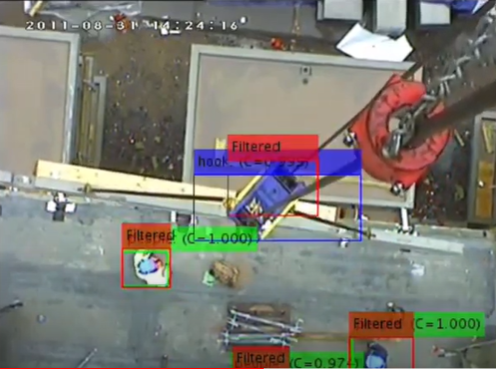Increase Construction Productivity By 40% With AI
Humans have been involved in construction throughout their existence building all kinds of shelters and structures for their personal needs and those of the community. As time went on, the building methods and techniques evolved allowing us to actualize projects previously thought to be impossible. Thanks to the developments in AI and machine learning, construction projects are becoming more efficient, optimized, and safer. With all of this in mind, let’s take a look at the impact AI is having on the construction industry.
Improved Safety
Accidents on the construction site are fairly common and they have long-term implications on worker safety and the projects as a whole. Just in the US alone, there are about 150,000 construction site accidents every year. Safety at the construction site needs to be a top priority and AI is already helping to reduce worker injuries. Some construction sites are already using computer vision cameras that can detect tools that are not stored properly, workers not wearing the necessary safety gear, and many other code violations. It can also be used for image recognition purposes in order to help workers find the tools they need faster thus reducing or even eliminating the need to walk around the construction site searching for them. Such technology also opens the door for a 40% increase in labor productivity and 10% budget savings.
The computer vision and image recognition technology relies on data annotation in order to identify the needed tools, equipment, and anything else site managers need to keep track of. However, we must also take into account that there are many factors that can obscure the detection of the needed items and the construction itself could be performed in a wide variety of circumstances. For example, while the system might be able to locate a buzz saw in daylight conditions, it might have less success doing so as the sun goes down or it may be partially obstructed by other tools. That’s why it is important to annotate as much data as possible to have data available to enable your system to recognize all of the needed objects from all kinds of angles and circumstances.
Optimizing Heavy Machinery
Construction teams are under constant pressure to increase the output while decreasing downtime, but achieving the necessary efficiency and effectiveness levels can be a daunting challenge. New developments in AI are optimizing the use of heavy machinery allowing workers to increase their productivity levels. For example, using a crane to raise and lower items is a standard job on virtually any construction site. However, even this seemingly routine job needs to be done with precision in order to deliver the needed item as quickly and safely as possible. A startup out of Israel, Insite.ai is using computer vision along with deep learning in order to automate such processes and make them more efficient. The AI-powered camera installed on the trolley of the crane provides valuable insight to the operator to allow the crane to be navigated along the most efficient trajectories and in the safest manner.
In the above image, we can see all of the things that the system needs to account for: people, objects, trajectory, items being delivered, and many other ones as well. Since it can be difficult for a human crane operator to calculate the needed trajectory while accounting for all the factors mentioned above, the computer can do it instantly.
Such technologies require high-quality data annotation since there is virtually no room for error. For example, if the crane is off its trajectory path, not only will it delay the delivery of the materials, but it could also cause an accident. Therefore, the data annotators would need to use 2D/3D bounding boxes in order to identify workers on the ground and other items that could come its way, and more detailed data annotation, such as semantic segmentation for determining the landing point of the materials.
Mindy Support is facilitating the Development of AI in Construction
As we saw from the examples above, AI technology is making construction projects safer and more efficient, but they are only as accurate as of the data annotation that was used to create it. Mindy Support is taking the burden of data annotation off the shoulder of researchers allowing them to focus on the development of the product(s). We are one of the largest BPO providers in Eastern Europe and can handle data annotation projects of all sizes. We have more than 2,000 employees in 6 locations across Ukraine and we can scale your project quickly without sacrificing the quality.
Posted by Il’ya Dudkin






